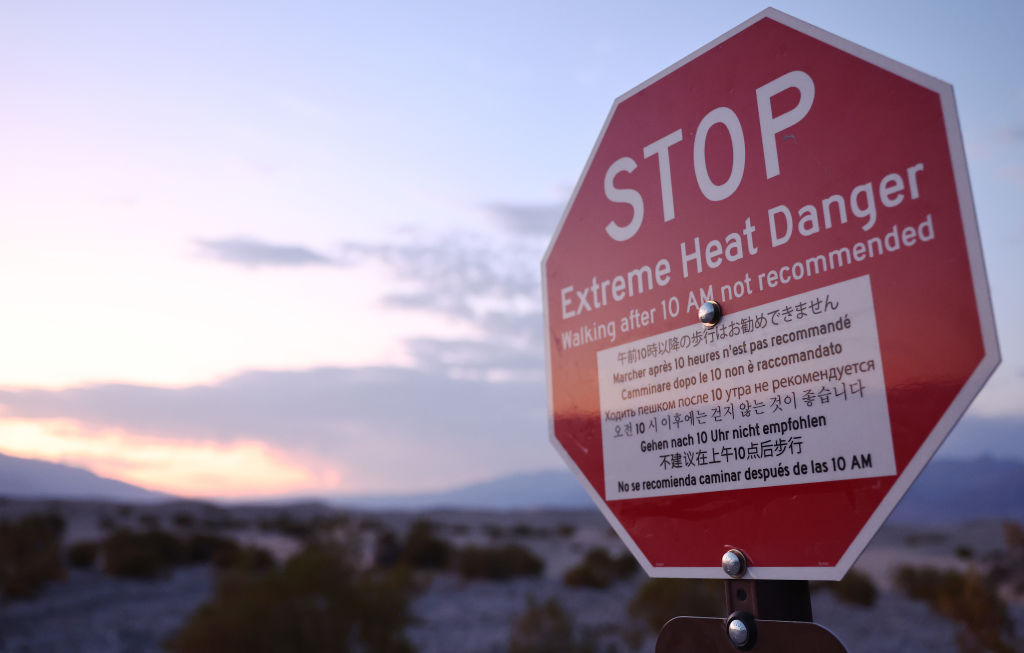
This article was originally published in Pat Mitchell’s blog.
This fact may surprise you: Heat kills more people in the U.S. than hurricanes, floods and tornadoes combined.
Over the last year, “6.8 billion people—78 percent of the world’s population—experienced at least 31 days of extreme heat,” according to a recent Climate Central report.
As Jagan Chapagain, secretary general of the International Federation of Red Cross and Red Crescent Societies (IFRC), wrote in Al Jazeera, “extreme heat is the silent assassin of climate change.”
“Worldwide, 2023 was the hottest on record—by a huge margin. … Heat waves across Europe killed more than 60,000 people in 2022. In the United Kingdom, roads melted and almost 3,000 people died. India sees at least 1,000 deaths a year attributable to extreme heat. In the United States, the number is similar. … According to The Lancet medical journal, China is on track to see from 20,000 to 80,000 heat wave deaths a year.”
In India, the fact that heat kills is more evident than ever. This year’s early summer heat wave was the longest ever recorded in that country’s history. Every day, there were reports of people dying as they attempted to work in temperatures that climbed above 43C (109F) in some places, creating deadly conditions for the women laborers of SEWA, the Self Employed Women’s Alliance. I have written several times about their advocacy work, fighting for rights and protections for its 2.9 women members, as SEWA is a Project Dandelion partner organization. We have learned so much and been so greatly inspired by their leader, Reema Nanavaty.

Last month, I wrote about SEWA’s innovative heat insurance program, which is running a pilot through April 2025, and has already provided support for more 46,000 women so that they could avoid toiling in the sun during heat waves.

Women farmers and waste pickers are quite literally falling dead from the work they do each day. What a tragic reminder of the urgency for all governments and yes, us too, to take action to end the reliance on the fossil fuel industries whose emissions are making heat waves stronger, longer and more frequent.
In the U.S., there are no federal regulations that protect workers from extreme heat. Last summer, the Biden administration directed the Labor Department to issue the first-ever heat hazard alert and begin drafting heat safety standards for employers, but they are unlikely to be finalized until after the election.
By 2050, heat waves will affect more than 3.5 billion people worldwide with great risks to cities, according to a 2023 study commissioned by the Adrienne Arsht-Rockefeller Foundation Resilience Center. In response, the Arsht-Rock Foundation created a new position—chief heat officer—and piloted a program in select cities around the world. City heat officers oversee response efforts during heat waves and the development of resilience plans in preparation for future events. Jane Gilbert became the world’s first-ever city chief heat officer in Miami-Dade County in 2021, and placements in other cities followed, including Santiago, Chile; Freetown, Sierra Leone; and North Dhaka, Bangladesh.

All of the heat officers in the pilot program are women, according to Fast Company—“an intentional strategy for representation, since women are disproportionately impacted: 80 percent of people displaced by climate change are women, and many work in the informal economy, doing domestic tasks such as caretaking, which is often indoors and unair-conditioned.”
“These climate leaders have taken critical action in their respective cities,” according to the Arsht-Rock Foundation. “They have spearheaded projects that range from installing cool pavements and roofs to mitigate the heat island effect, to categorizing heat waves to help residents prepare for extreme events, to planting trees to create canopy. Through their advocacy and project implementation, they are critical to increasing urban populations’ resilience.”
What’s more, these women heat officers are connected. “[They] stay in touch through a group chat on WhatsApp, sharing tips with one another and advocating for changes in policy,” according to NBC News.
“I speak to the chief heat officers in Phoenix and LA the most,” Miami’s Jane Gilbert told NBC News, “but I’ve learned from Melbourne, Australia, I’ve learned from Santiago, Chile, and from Athens, Greece. That type of resource-sharing is one of the greatest strengths and satisfactory aspects of my job.”
All of these women leaders are working at the intersection of public health, infrastructure planning and labor regulations in addressing climate impacts, proving once again the climate and nature crisis intersects with so many other global challenges.
More evidence, as well, that women leaders like these chief heat officers and the women of SEWA are the allies the world needs to enact solutions in these dangerously hot times. We may surpass the 1.5 degrees mark (still the goal of the targets set by global agreements), but with investments in renewables and other mitigation technologies, along with ending fossil fuel subsidies and investments, the temperature rise can be restrained—every fraction of a degree matters—saving thousands, potentially millions more lives.
Isn’t that enough reason to do whatever each of us can do to demand the urgent actions necessary for a habitable home for everyone?
Up next:
U.S. democracy is at a dangerous inflection point—from the demise of abortion rights, to a lack of pay equity and parental leave, to skyrocketing maternal mortality, and attacks on trans health. Left unchecked, these crises will lead to wider gaps in political participation and representation. For 50 years, Ms. has been forging feminist journalism—reporting, rebelling and truth-telling from the front-lines, championing the Equal Rights Amendment, and centering the stories of those most impacted. With all that’s at stake for equality, we are redoubling our commitment for the next 50 years. In turn, we need your help, Support Ms. today with a donation—any amount that is meaningful to you. For as little as $5 each month, you’ll receive the print magazine along with our e-newsletters, action alerts, and invitations to Ms. Studios events and podcasts. We are grateful for your loyalty and ferocity.





